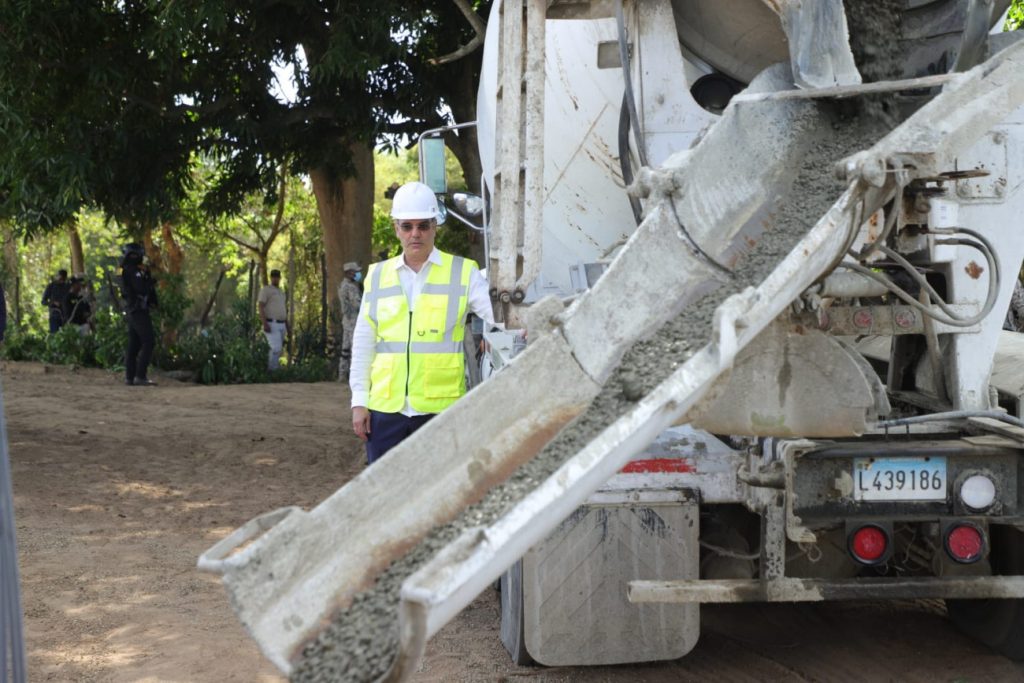
President Luis Abinader told the country in his 27 February 2021 speech to the Congress (the National Assembly) that he would build a wall along the Haitian border to reinforce security on the border and halt contraband, cattle theft, drug and firearms trafficking and the steady migration of Haitians into the Dominican Republic.
Reportedly, already 23 kilometers of the fencing has been built, almost entirely in the southern areas near Jimani and Elias Piña (Comendador), the second and third most important crossing points along the border
On Sunday, 20 February 2022, President Abinader was in Dajabón on the northern extension of the border with Haiti to supervise the construction of new wall sections in 10 crossing points of five border provinces.
According to accounts, the wall is mostly chain-link fencing in two rows, and although the Ministry of Defense has not give out any names, it is known that companies from the United States, Israel and Spain took part in the international tender for the Dajabón wall.
The newly announced section of the wall will have 54 kms. It is under construction at the cost of RD$1.75 billion. The Presidency reports this phase of the border wall will be completed in nine months. It calls for the construction of 19 control towers, 10 access gates and patrolling by more than 10,000 military personnel stationed on the border.
The wall contemplates the installation of contemplated surveillance systems with motion sensors, illumination radars, command centers, video surveillance, communication towers, and unmanned aerial units.
Most people in Haiti do not have government identification documentation. The President says that in the works is the installation of an advanced biometric control system for the registration of persons. The German-made software, uses the ABIS system that combines fingerprints with photographs, making it possible to identify a person with a minimum margin of error.
The concrete wall construction has met with much criticism. Many had called instead for the construction of a green wall and sustainable agriculture development. Others say the wall should have been made up of industries to employ Haitians that live in Haiti.
Senator Antonio Marte (Santiago Rodríguez province), says that Haitians are paying up to RD$15,000 for the illegal crossings, up from RD$7,000 in the past.
For years, government sectors in Haiti had advocated the construction of the wall to ensure the collection of taxes on Dominican exports to Haiti. The Haitian government has border stations in Ouanaminthe (near Dajabón), Belladere (near Elías Piña), Malpasse (near Jimaní) and Anse-a-Pitre (near Pedernales). Jimaní is the most trafficked crossing because it is the nearest to Port-au-Prince, the capital of Haiti.
The Dominican border with Haiti has around 390 kilometers. The border provinces from south to north are: Pedernales, Independencia, Elías Piña, Dajabón and Montecristi with a territorial extension of around 8,390 km2, or around 17.31% of the national territory, but a population of around 300,000 inhabitants, or around 3% of the total population.
The government has built sections of the wall in Independencia (Jimaní-4,650 meters), Elías Piña (Comendador-3,350) and Pedernales (Pedernales-2,000 meters).
Read more:
Presidency
El Dia
Listin Diario
Diario Libre
El Caribe
Diario Libre
Diario Libre
2013 UN Environment Program Report on the Border
Wikipedia
21 February 2022

